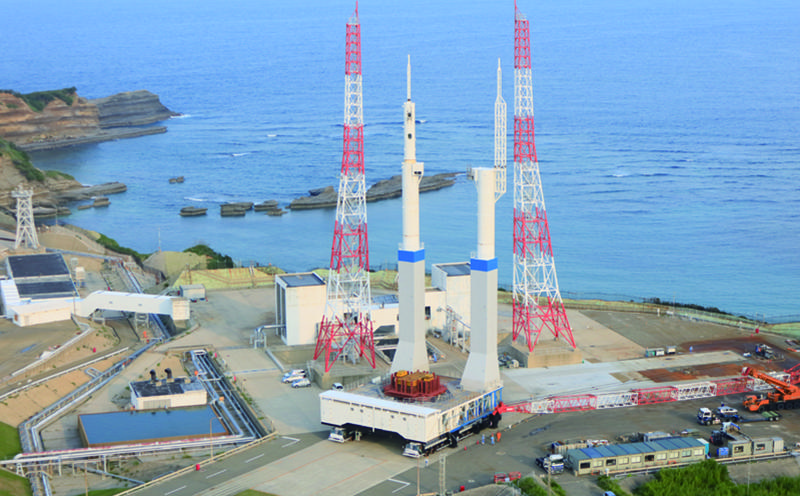Space Transportation Technology Directorate
Renovation of the Launch Facilities for the H3 Launch Vehicle
The development of JAXA's new rocket, the H3 Launch Vehicle, is steadily advancing toward the first launch in FY2020. Here at the Tanegashima Space Center (TNSC), renovation and construction work is also under way to prepare the launch facilities for the H3 rocket. Its highlights are a new Movable Launcher (ML) and its transporters Dollies. The ML is a platform on which parts transported from factories are assembled into a rocket in the Vehicle Assemble Building. Before launch, a rocket on the ML is carried by the Dollies to the launch pad.

The most notable feature of the new ML is that it has a single opening larger than that of the current MLs. The opening allows an exhaust plume from a rocket to escape to the flame duct. Since a launching rocket generates an explosive sound which can affect its on-board electrical components, an enormous amount of water is injected to the duct to suppress this sound. The current system becomes costly when launching a more powerful rocket because more capacity is needed for the water injection equipment. This large opening makes an important contribution to the sound suppression. It also reduces damage on the ML structure caused by heat of the plume. Furthermore, the removal of the water piping from the ML to the ground eliminates the piping work, thereby shortening the launch operation time. Coming up with creative ideas like these, we have achieved cost reduction in both development and operation.
Wataru Sarae, who was involved in the development, says, "What was the most difficult was the acoustic tests using a 1/42 scale model to measure sound levels."
"At first, the engine didn't work well, so we had to improve it and then perform tests repeatedly. Also, since the testing was conducted in April at the Noshiro Rocket Testing Center in Akita Prefecture, the northern part of the main island where spring comes late, we were plagued by cold and strong winds. However, with the support of other departments such as the Institute of Space and Astronautical Science (ISAS) and the Research and Development Directorate, we all made a concert effort and acquired significant data."
As to the Dollies, the focus is placed on improving the reliability. A pair of the Dollies, each of which has 56 wheels, load a rocket along with the ML and travel automatically by detecting magnets buried along the track. The pair have a key role in carefully transporting a rocket to the launch pad at a speed of 2 km per hour, slower than walking speed.
"Since any failures such as getting stuck on its way would cause a big problem, the Dollies are designed to recover to normal within 30 minutes no matter what kind of failure occurs. Last June, we conducted the first test run of the Dollies carrying a load of 1460 tons, the same weight as the H3 rocket itself. The Dollies perfectly rounded the S-shaped curve, the most difficult part of the track, and then came to a full stop exactly at the launch pad. I was very glad to see the successful operation."
Each section in the TNSC has now moved into the final stage of the preparation toward the debut of the H3 Launch Vehicle.
Profile

|
|
|---|
- Home>
- Global Activity>
- Public Relations>
- JAXA’s>
- JAXA's No.78>
- Renovation of the Launch Facilities for the H3 Launch Vehicle